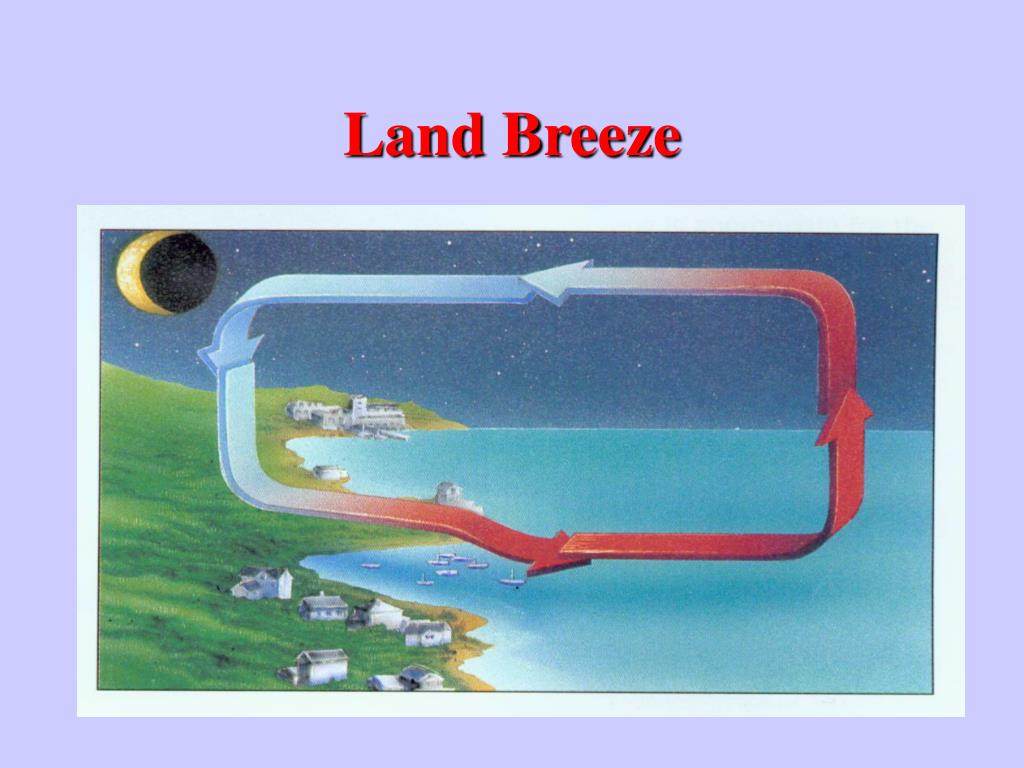
However, further research is needed to generalize the current results for other CS events with different intensity and displacement characteristics. The main difference is because of the property of water to retain heat for a longer duration as compared to land. Whereas, the offshore winds are called a land breeze that arises from land. The numerical results revealed that during the interaction between local breezes and a CS event, the diurnal signal remains, except for the initial day of the event. A sea breeze is any wind that blows from a large water body towards a landmass. Model results allow us to identify that the mechanisms responsible of such large amplitude of the diurnal signal in this area are: (i) the thermal gradient, (ii) the relatively small value of the Coriolis force, (iii) the orography, (iv) the friction, and (v) the peninsula's geometry. Furthermore, the interaction between the sea breeze and the mean wind associated to the trade winds generates a line of convergence that crosses the YP. Although breeze events are caused by differential heating at a small spatial scale, particularly in the Gulf of Mexico, this diurnal signal exceeds the local spatial scale. Numerical results suggest that sea breezes, with wind intensities higher than 10 ms -1, extend more than 100 km offshore in the northern YP. Diurnal wind components were least-squares fitted to a sinusoidal signal, and the resulting parameters were used to obtain an elliptical hodograph related to the breeze phenomenon. coast, with a correlation coefficient of 0.56 and a circular correlation coefficient of 0.83, respectively.

The land breeze occurred within 50 km of the shoreline until noon. The numerical model was validated with observations at 20 stations located across the YP, adequately reproducing wind speed and direction at Sisal, Yuc. The resulting sea breeze began at the shoreline at 1200 local standard time (LST), moved landward at a rate of about 10 km h1, and reached 60 km from the shoreline at 1800 LST.

The WRF model is implemented in three nested domains with a maximum resolution of 3.6-km. In this paper, the diurnal wind component associated with the breeze phenomenon and its variability due to the presence of a CS event are investigated utilizing the Weather Research and Forecasting (WRF) model. Field observations suggest that nearshore hydrodynamics and beach evolution in the study area are strongly controlled by waves generated during sea breeze events. The northwest of the Yucatan Peninsula (YP) is characterized by the presence of intense sea breezes and Cold Surge (CS) events (locally known as Nortes).

The breeze phenomenon is of great importance in coasts around the world owing to both its impact on local atmospheric dynamics and its influence on coastal processes.


 0 kommentar(er)
0 kommentar(er)
